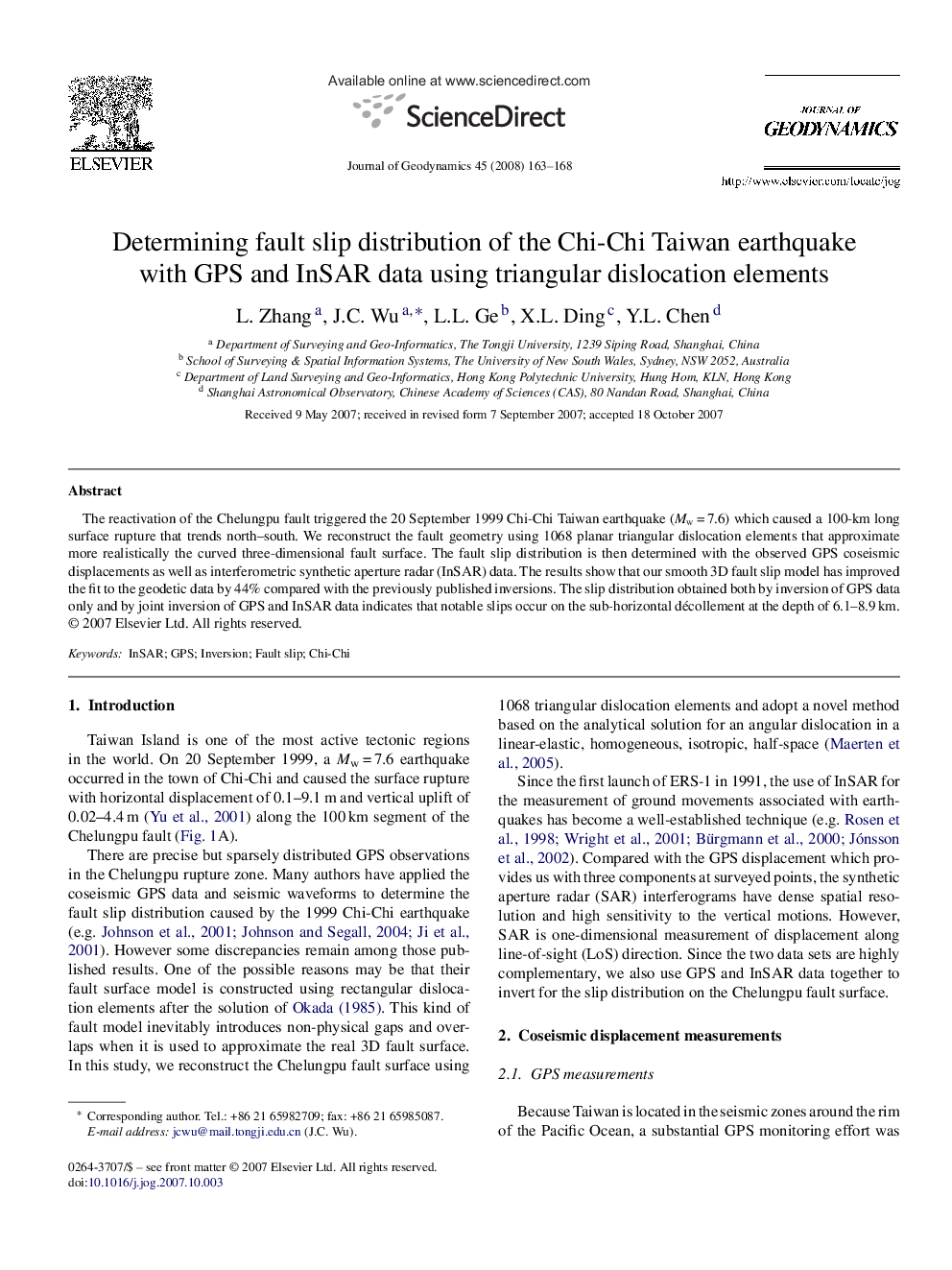| Article ID | Journal | Published Year | Pages | File Type |
|---|---|---|---|---|
| 4688731 | Journal of Geodynamics | 2008 | 6 Pages |
The reactivation of the Chelungpu fault triggered the 20 September 1999 Chi-Chi Taiwan earthquake (Mw = 7.6) which caused a 100-km long surface rupture that trends north–south. We reconstruct the fault geometry using 1068 planar triangular dislocation elements that approximate more realistically the curved three-dimensional fault surface. The fault slip distribution is then determined with the observed GPS coseismic displacements as well as interferometric synthetic aperture radar (InSAR) data. The results show that our smooth 3D fault slip model has improved the fit to the geodetic data by 44% compared with the previously published inversions. The slip distribution obtained both by inversion of GPS data only and by joint inversion of GPS and InSAR data indicates that notable slips occur on the sub-horizontal décollement at the depth of 6.1–8.9 km.
